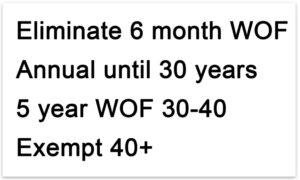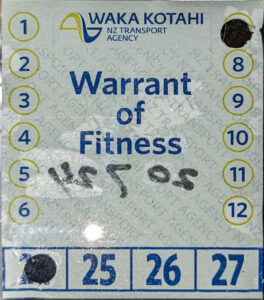In the UK, cars over 40 are exempt from MOT (WOF). Why not in NZ?
In the UK,
one of the most regulated nations on the planet, cars over 40 are exempt from MOT (WOF), are charged no road tax, may drive in ULEZ zones and have a simple, practical first-time registration inspection. So why is it so different in NZ? Because until now, no one has challenged the system.
The UK chose to exempt collectible cars by a convincing argument that they are safe without needing a third party to warrant their safety. Almost all are kept as second vehicles. They are not the driver’s primary mode of transportation. The statistics show most cars that have reached the required age for tax exemption aren’t used for everyday driving; they have become a collector’s item.
The UK found that taxing collectible cars the same as daily drivers caused the cost of ownership to soar, especially because collectors frequently own multiple collectibles even though they only drive one at a time, and usually in daylight, good weather and avoid congestion.
The UK values its living history, and in this the fleet of collectible motor vehicles plays an important part. The preservation of it is not done by well-funded museums, but by ordinary citizens who invest time and money to keep automotive history alive.
A fixed pool – no one makes new collectible vehicles.
The collectible car market is by definition fixed. No one makes new 30 year old cars, thus over time, the pool diminishes. Some cars deteriorate, especially if not driven regularly (more than once a month). They get to a point where the cost of maintenance, or if let go, the cost of restoration, exceeds the collector’s budget and the market value of the car. At that point it falls out of the pool, one less car in the total ever made.
Cost and time:
$85 for a WOF may not seem like a lot for the owner of a daily driver, but when it is every six months, and the collector owns seven collectibles as well as their one or two family cars, the WOF for the collectibles hits $1,200 and takes 14 days a year out of their life. And the WOF inspector may not know what to look for. For example, one collectible military 4×4 is designed to have bearings that have slight play in them. The inspector says they will fail until the owner shows the documents from 42 years ago stating the allowable tolerances. This is repeated every six months, and if the inspector disagrees, it’s a fail.
We propose

to follow the French model for cars 30-40 years of age, where the WOF is every five years, and the British model for cars over 40, where the cars are exempt from WOF (MOT).
At any time, the police can stop a car and if they determine it is unsafe (for example, a bald tyre), they can order a WOF inspection regardless of age.
Why?
Collectible cars are safe. The proof is in the statistics

The proof is in the cost of insurance.
Insurance companies assess risk, and their policies for collectibles cost 20% of the cost to insure daily drivers. Why? Because their owners are older, safer drivers and they cherish their cars. They drive for pleasure, which means driving in better conditions for a start. Most drive in daylight, avoiding bad weather, and choose open roads, not stuck in rush hour. They tend to focus on their driving, not eating, drinking coffee, talking on the phone, or yelling at the kids. They protect their collectible, they take care of it. They are more attuned to the sounds, the feel, the signals a car gives when something needs attention. They typically will know and fix something wrong before it gets to the WOF inspection. To own a collectible, one either must know how to work on it, or have a good independent mechanic nearby. Most know more about their collectibles than the WOF inspector.
WOF not fit for collectibles: Many collectibles, for example, have a body built on a separate frame. Inspectors used to looking at a monocoque body will have no understanding of the engineering. Read the comments in the petition where collectors tell their story.